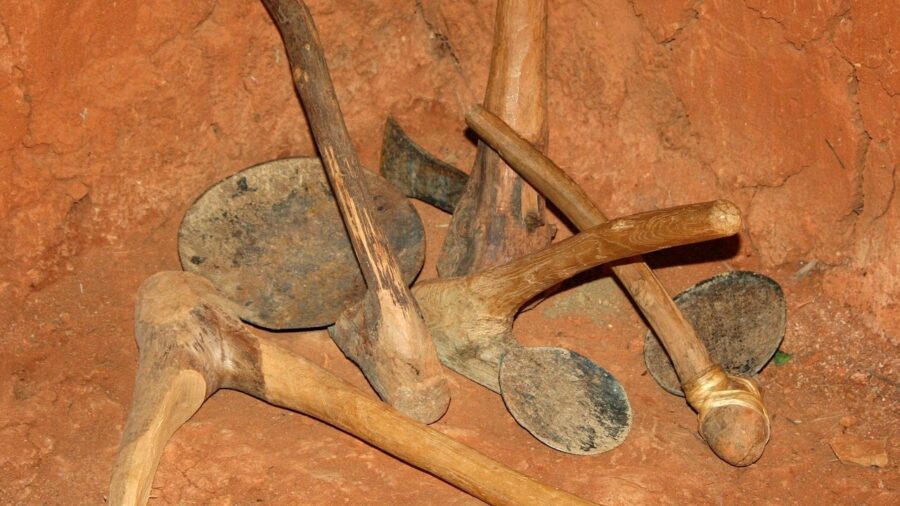800 Years Of The Same Family Found In Ancient Burial Site

Researchers have discovered a mass grave in France containing 800 years of remains—almost all of which share the same male DNA. This fascinating Stone Age burial ground is located in Aven de la Boucle, a limestone cave in southern France. Researchers estimate that at least 75 people were buried in the grave, a majority of whom died as adults.
Mostly Male Remains

A study published August 28 in the journal Proceedings of the Royal Society B revealed that scientists carbon-dated the bones of 37 corpses and analyzed their genomes. Researchers found that individuals had been buried at the site starting in 3600 B.C. and ending sometime around 2800 B.C. Additionally, the research team determined that 76 percent of the remains found at the Stone Age burial site were male and belonged to the same paternal line.
The male lineage—known as G2—is passed down between men through the Y chromosome. Researchers say this finding shows a paternal social status passed down over generations. This also explains why hardly any female remains were found at the Stone Age burial ground.
A Patrilineal System To Consider

Study co-author Mélanie Pruvost, a paleogeneticist at the University of Bordeaux in France, claims that the genetic relationship shared between most male corpses allowed researchers to “raise the hypothesis of a patrilineal system.” Pruvost further theorized that one had to belong to the “specific male lineage,” to qualify for interment at the Stone Age burial ground.
However, this hypothesis doesn’t solve the mystery of why some women were also buried in the mass grave. Pruvost had a few thoughts on why that was the case. The paleogeneticist thinks that perhaps a few women were chosen to be part of the “collective burial.”
She went on to explain that in the Stone Age, it was common for women to abandon their ancestral grounds to live with their mate.
Pruvost called this a “patrilocal residence system.”
Burial Site May Have Significant Meaning

As a result, she theorized that the women found at the Stone Age burial ground may have come from another area and returned to their original community to be buried. Pruvost and the other researchers still don’t know why this particular Neolithic group returned to the burial site for 800 years. Some think the location may have held significant meaning for the group.
Other Ancient Artifacts

Pruvost thinks there could be “a thousand” different reasons the group chose this Stone Age burial ground. Unfortunately, she also thinks it’s not doubtful that archeology will ever be able to determine those reasons. Among the skeletal remains, the researchers also found several artifacts in the mass grave, such as ceramics and items crafted from animal bones possibly used to hold a burial shroud in place.
A Fascinating Genetic Through Line

This brings to mind a similar Stone Age burial ground excavated in another part of France earlier this year. That site in Clermont-Ferrand contained the corpses of 63 individuals, as well as structures and artifacts left over from a human occupation spanning approximately 4,000 years.
While this earlier Neolithic discovery was also significant, it didn’t feature a singular genetic through line connecting all the deceased like the most recent burial site.
source: The Royal Society Publishing












